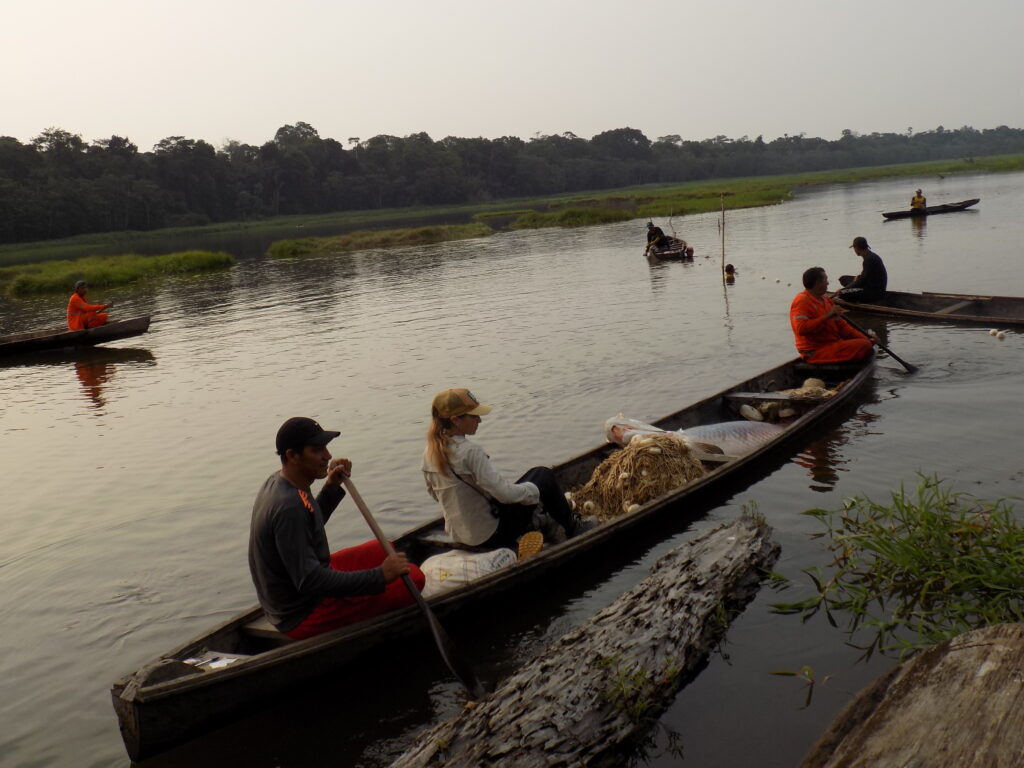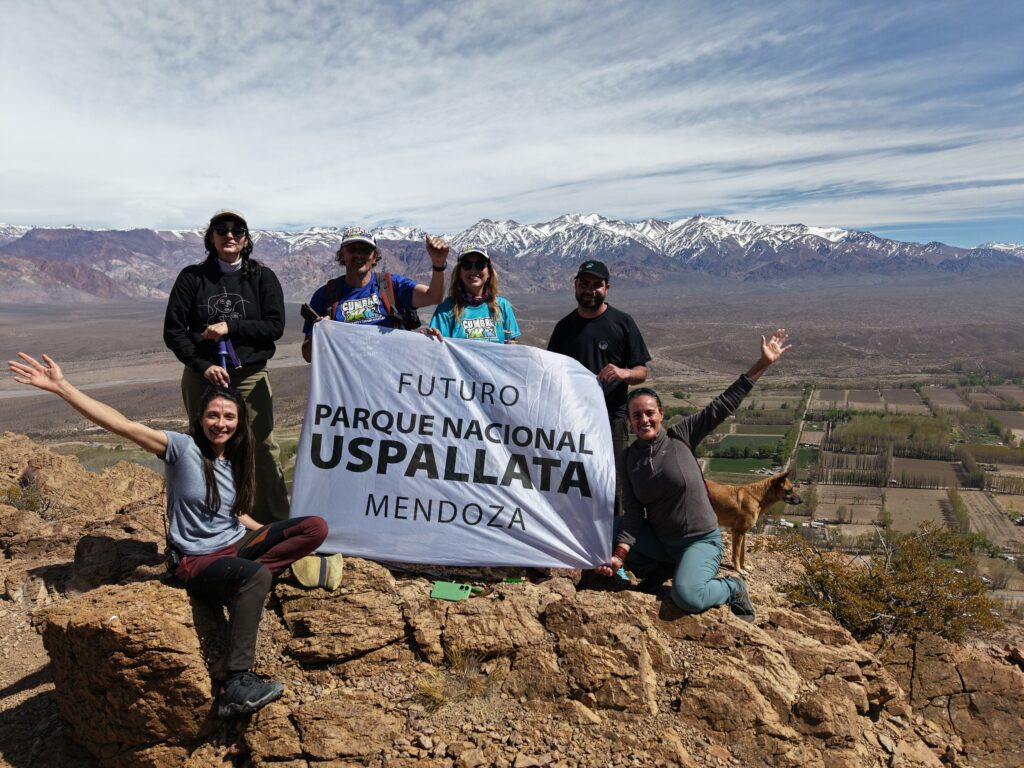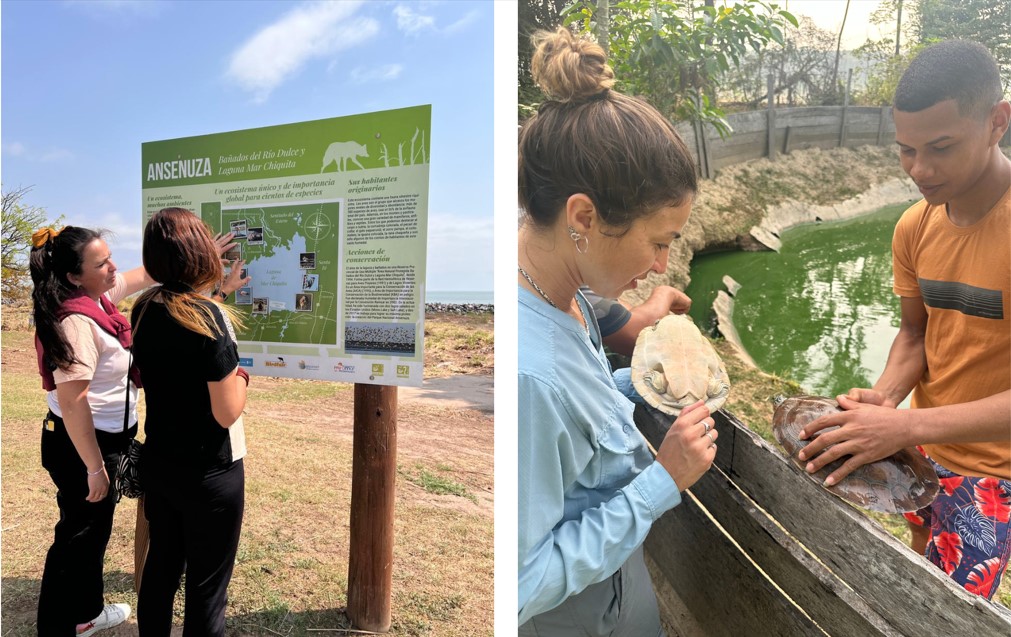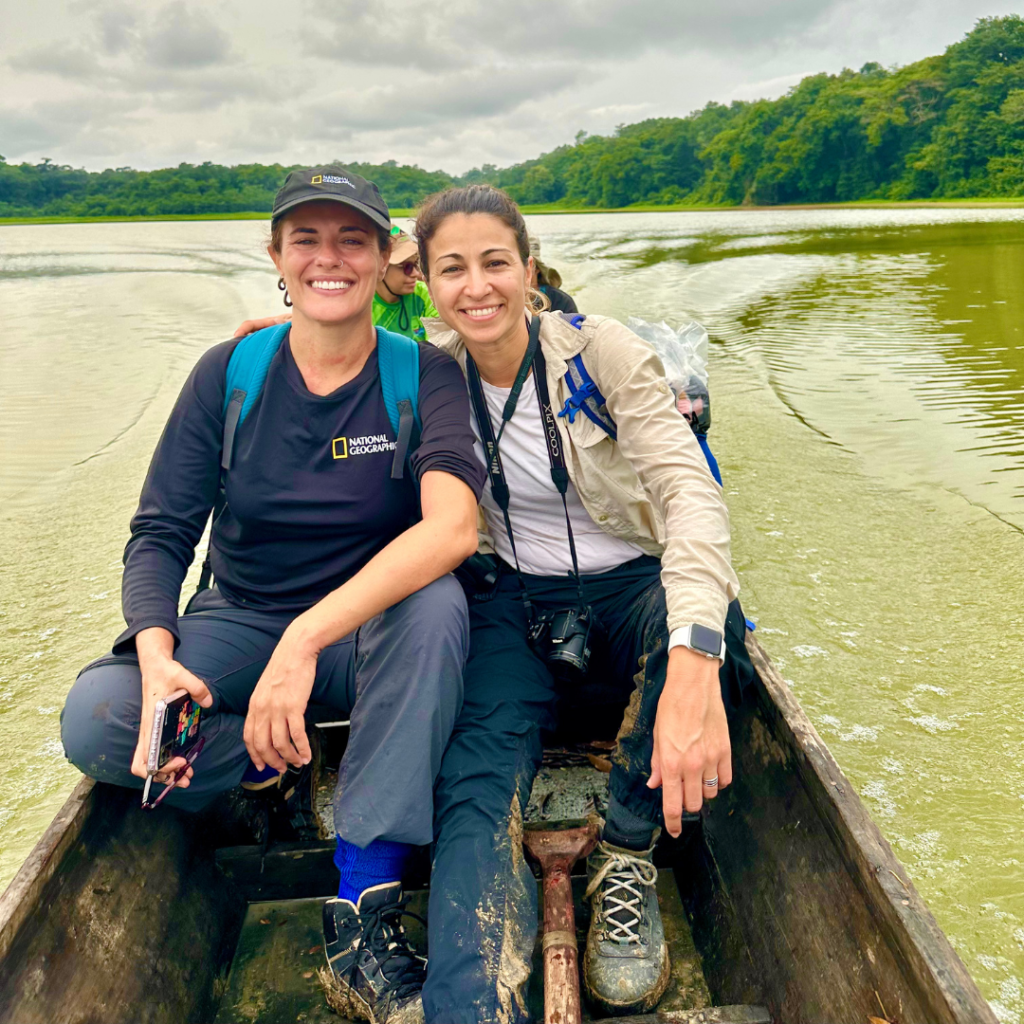Instituto Juruá and Natura Argentina have come together to strengthen the management of protected areas. This exchange of experiences includes conservation practices in the Mid-Juruá region and national park projects in Argentina, aiming to integrate biodiversity conservation with community development.
By: Andressa Scabin
Translated by Luiza Campos

The establishment of Protected Areas continues to be one of the main strategies for conserving biodiversity. Brazil currently has 3,780 protected areas* with a total of 3,574,534 km² of legally protected land. Our neighbor Argentina has 473 protected areas* with a total area of 374,263 km². While these numbers are significant, many areas of importance for biodiversity conservation still need to be designated, not only in these countries but around the whole world. The designation of protected areas, particularly National Parks in Argentina, is the mission of Natura Argentina, a non-governmental organization based in Córdoba, founded in 2020, which recently became a partner of Instituto Juruá. The partnership between the two organizations aims to strengthen the new Coordination of Protected Areas and Social Justice, whose goal is to support the creation and implementation of sustainably used protected areas in the Amazon.
One of the first actions of this partnership was an exchange of experiences, which took place between September and October, allowing each organization to gain a deeper understanding of the actions carried out by their partners. First, Lucila Castro, the executive director of Natura Argentina, visited Mid-Juruá and had the opportunity to meet representatives from several local associations, such as ASMAMJ, AMARU, AANE, AMECSARA, ASPROC, and AMAB, and to hear some of their stories and learn about how they operate and organize themselves in the Mid-Juruá Territory Forum. Additionally, Lucila experienced the fish harvesting in the Marapatá community within the Carauari Fishing Agreement Area and witnessed how social organization is essential for the management of pirarucu, as it relies on many individuals performing their activities in a well-synchronized manner to ensure that the quota is met and the fish arrives at its destination in good quality. Lucila also learned about another successful story of community-based conservation in Mid-Juruá, the protection of beaches through the action of monitoring teams. Accompanied by João Pedro, she visited the Manariã monitoring site, where she was able to understand the work of the monitors, as well as learn a bit about the biology and ecology of amazonian chelonians. Finally, it was also possible to visit the Tambaqui Lake, located in the Carauari Fishing Agreement Area, where Instituto Juruá and AMAB are working together on the designation of a community-based private protected area within the new Coordination of Protected Areas and Social Justice, which the partnership established with Natura Argentina aims to strengthen.

In the second part of the exchange, Andressa Scabin, coordinator of Protected Areas and Social Justice at Instituto Juruá, traveled to Córdoba and met a large part of the technical team of Natura Argentina and she had meetings with representatives from several departments to understand how the organization operates and subsequently visited in person 3 of the 5 projects led by the organization. First, she visited the already established Ansenuza National Park in Miramar, famous for having the Laguna Mar Chiquita, an important site for migratory birds that hosts large populations of flamingos. Next, she went to the province of Catamarca, where she meet the Serras de Ambato, a mountainous region with vegetation from the Chaco Seco, Yungas, Prepuna, Monte de Sierras, and Bolsones, where Natura Argentina is supporting actions for the creation of a National Park of 156,000 hectares in one of the two provinces in Argentina that still do not have a National Park. The other Argentine province still without a National Park is Mendoza, where Natura Argentina is supporting the establishment of a National Park in Upallata, covering 220,000 hectares. Upallata is a mountainous region with impressive scenic beauty and immense ecotourism potential, located near the famous Aconcágua, the highest peak in Latin America.

This exchange of experiences between the organizations was very enriching, as it allowed for the recognition of strengths and weaknesses in which each organization can directly support the other’s improvement. Natura Argentina brings extensive experience in processes related to the designation of protected areas, both in terms of technical knowledge and the necessary political coordination, which, for Instituto Juruá, represents a new field of work that is still being developed within the new coordination. On the other hand, Instituto Juruá brings extensive experience in territorial protection and governance through its support for fishing agreements and its work with local associations and cooperatives to strengthen sociobiodiversity production chains. This knowledge is very important for implementing protected areas, as the lack of financial and human resources for the implementation often leads to many designated areas not fulfilling their conservation goals, becoming so-called “paper protected areas.” Therefore, community-based conservation arrangements and the strengthening of productive chains can represent important tools to ensure the effectiveness of protected areas, both by enhancing territorial protection and biodiversity conservation, as well as by generating income and improving the quality of life for communities living within or in the buffer zones of these protected areas.

Thus, to continue the exchange of experiences between the organizations, the proposal is for the representatives involved in the exchange to continue facilitating both virtual and in-person exchanges between the two teams, as well as to apply the knowledge gained during the exchange.

*the data on the number and total area of protected areas in Brazil and Argentina were sourced from the website www.protectedplanet.net